
Ecommerce insights on the go
Tune in to the Make it Big Podcast — our thought leadership audio series for retailers, entrepreneurs and ecommerce professionals. You'll get expert insights, strategies and tactics to help grow your business.

The Key to Wielding Big Data in Ecommerce to Build Personalized Experiences and Improve Retention
Maddy Osman
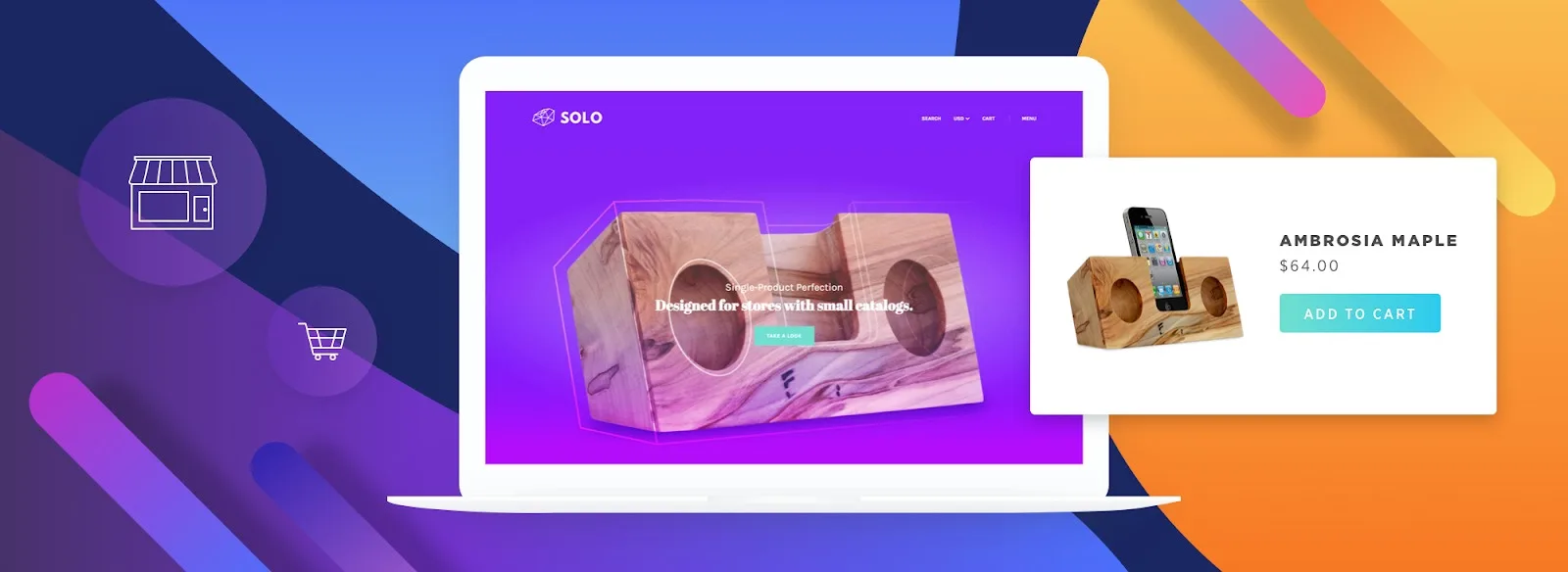
The surfacing of the Facebook debacle involving Cambridge Analytica and the massive amounts of data collected from 87 million users, which was used to influence the 2016 presidential election, revealed big data as the powerful beast it can be.
Even when used with good intentions, as Facebook CEO Mark Zuckerberg alleged his company did, data can lead people, and businesses, astray.
Wired dives straight to the heart of the matter:
“Modernity provides too many variables, but too little data per variable. So the spurious relationships grow much, much faster than real information. In other words: Big data may mean more information, but it also means more false information.”
The cherry picking that can be done with big data allows you to manipulate information to tell you whatever you want it to, which is great for headlines, but bad for business.
However, that’s not to say that big data can’t still be an essential tool in your arsenal as your grow your ecommerce channel.
The key to wielding big data in such a way as to make it work for you demands you focus on two things:
Your circle of competence.
The way the world works.
One of the most exciting yet challenging things about running an ecommerce site or channel is unpredictability — though the possibility of having to appear before the Senate, as Zuckerberg did, is perhaps not the kind of excitement that any business owner wants to be involved with.
Nonetheless, both technology and human behavior are constantly changing, and as a business owner or ecommerce manager, you have to be ready to adapt.
Due to the ease of creating and maintaining an ecommerce shop, as well as the rise of micro-brands, today’s market is riddled with cutthroat competition and decreased customer loyalty.
Online businesses are constantly looking for ways to retain customers and improve the customer experience, not knowing that the solution is right at their fingertips.
Despite the intense competition, ecommerce business owners have an advantage over traditional retailers that own brick and mortar shops.
Ecommerce is nimble and adaptable; these businesses aren’t confined to a particular location and often have inventory or retail leases to worry about when using 3PLs or running an ecommerce-only operation.
Ecommerce businesses do have the ability to reach a global market, with access to information that brick and mortar retailers don’t have.
Nonetheless, it is even more essential that ecommerce business owners and managers operate within their circle of competence.
Everyone has a circle of competence created through study and experience. The key is to function within this circle and leverage your expertise to amplify your output.
When you are properly leveraging your deeper understanding of a market, product, or clientele, you are able to reap larger rewards for the same amount of effort than someone operating outside their circle of competence.
As Warren Buffet wrote in a 1996 Chairman’s Letter,
“What an investor needs is the ability to correctly evaluate selected businesses. Note that word ‘selected’: You don’t have to be an expert on every company, or even many. You only have to be able to evaluate companies within your circle of competence. The size of that circle is not very important; knowing its boundaries, however, is vital.”
Combining your understanding of how the real world works with your circle of competence will allow you to utilize big data to your advantage.
In other words, it can help you build a data-driven ecommerce business.
What is Big Data and Why Should You Use it?
Big data is a big buzzword when it comes to modern business management. It refers to extremely large data sets that may be analyzed to reveal patterns and trends in human behavior.
With people producing an estimated 1.7MB of new information per second, it is expected that our accumulated digital universe of data will grow from 4.4 zettabytes to 44 zettabytes (or 44 trillion gigabytes) by 2020.
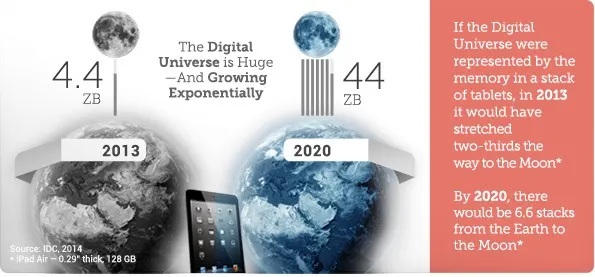
Many brands think access to big data is confined to big retailers that can afford an in-house team or who can afford to buy data from data brokers.
You’ll be happy to discover that this logic is flawed, as even the smallest businesses have the means to access and analyze ecommerce big data.
Ecommerce platforms like BigCommerce track and give merchants access to consumer behavior data, which business owners can use to make informed decisions.
Yet, despite having so much ‘power’ in their hands, less than 0.5% of available data is being used for these purposes.
In this, we’ll look at how you can leverage ecommerce big data effectively to grow your business and better serve your customers.
The Benefits of Using Big Data in Ecommerce
According to a study by BARC, some benefits of using big data include:
Making better strategic decisions (69%).
Improved control of operational processes (54%).
Better understanding of customers (52%).
Cost reductions (47%).
This is crucial for ecommerce businesses. As you scale, “getting geeky” about your data becomes more and more important. Data-driven ecommerce businesses regularly measure and improve on the following:
Improve shopper analysis.
Improve customer service.
Personalize customer experience.
Provide more secure online payment processing.
Better target advertising.
How to Use Big Data for Ecommerce Business Success
1. Shopper analysis.
Big data is helpful in developing buyer personas or shopper profiles.
This helps you to determine customer preferences, such as which products they like best or what times they usually shop.
These insights can be used to improve your operations.
For example, you can use the information about peak shopping times to get rid of excess stock at sale prices or run social ads during these timeframes.
Ecommerce big data may also reveal some unexpected shopping behaviors.
For instance, using big data, Walmart discovered that people who bought diapers also tended to buy beer. Imagine the cross-promotional opportunities…
For businesses using SaaS technologies or data analytics tools, these kinds of insights are often easy to uncover.

BigCommerce Insights Analytics automatically serves up this type of information.
2. Customer service.
Customer service plays a huge role in ecommerce.
It costs 5x less to retain customers than acquire new ones and loyal customers spend up to 67% more than new customers.
If customers are not satisfied, 13% of them will tell 15 or more people they are unhappy. Conversely, if they had a positive experience, 72% said they would share this with 6 or more people.
Online retailers can use big data to track customer service experiences, like showing how fast your response times are — which plays a huge factor in customer service.
71% of online customers expect to be able to access help online within 5 minutes.
Big data can also be used to track delivery times and customer satisfaction levels, and help companies identify potential problems—then resolve them before a customer gets involved.
Integration apps and tools like Reamaze can help you do this in a matter of minutes.
“I’ve used many helpdesk products in the past and it doesn’t get any better or simpler than Reamaze. This is a well thought out product with the perfect set of features. It took me about 10 minutes to set everything up. Literally.
I can help customers using Live Chat directly on my store. I can even see what customers are doing and where they go. Works with my emails and social accounts too!” –– Reamaze Customer Review
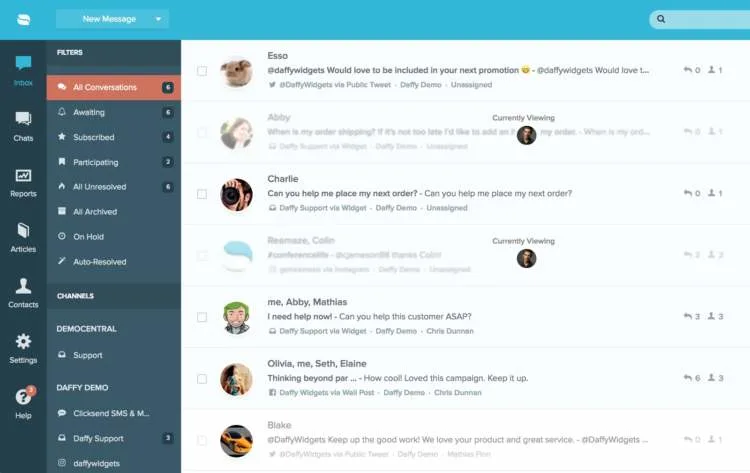
Full customer service integration from on-site chat to Facebook messenger and beyond. This app also pulls in customer on-site activity data to help you identify pain points or poor UX experiences.
“I’m just starting to setup Reamaze helpdesk. I created an account and got it working on my store in minutes. Truly great integration. Reached out to their support and they were very helpful. Looks like it’s going to be a winner in supporting my future customers with live chat.
Apparently they also offer a real time live dashboard so I can see which customers are on my store and what they’re doing. This is a native integration so I can see customers’ order data as well.” –– Reamaze Customer Review
3. Personalized experience.
With the cutthroat competition in the ecommerce industry, ecommerce personalization isn’t just something to set your business apart — it’s practically a requirement.
86% of consumers say personalization plays an important role in their buying decisions.
87% of shoppers said that when online stores personalize the shopping experience, they are driven to buy more.
Big data can help by giving insights on customer behavior and demographics, which is useful in creating personalized experiences.
You can use ecommerce big data to:
Send emails with customized discounts and special offers to re-engage users.
Give personalized shopping recommendations.
Develop flexible or dynamic pricing, which relies on external factors such as consumer demand and competitors’ pricing. A 1% increase in price translates to 8.7% increase in profits. Walmart uses online shopping big data to determine patterns that point to higher profits. For example, a product sold on its own may not make as much profit compared to pairing it with something else.
Present targeted ads, as different customers want different/relevant messaging. You may already be using some form of big data by presenting targeted ads on your social media networks.
One easy way brands are personalizing the on-site experience for existing customers – and thus improving retention – is with customer groups.
Here is how customer group personalization works:
Determine your best customers.
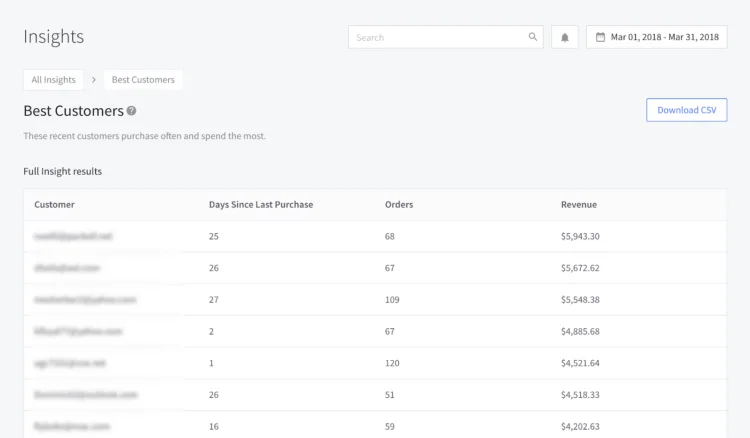
Create a VIP customer group for those customers.

When you launch new products, make those items exclusively available to the VIP customer group for a certain amount of time.
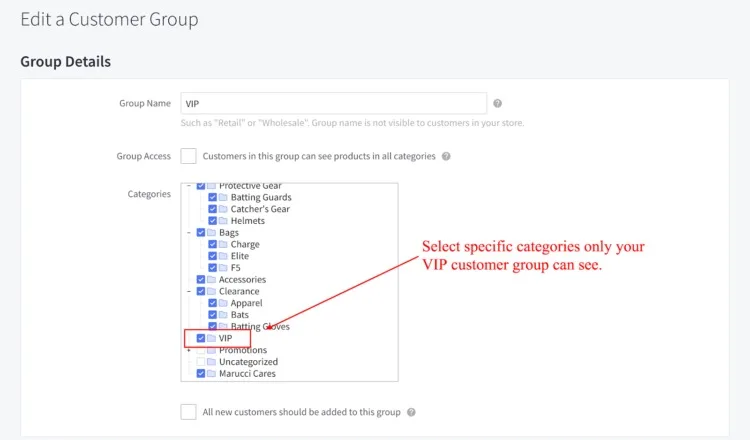
Offer that group discounts no one else gets.
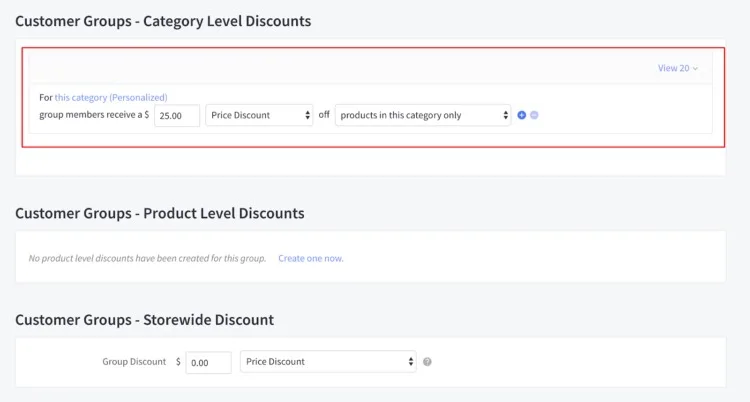
4. Secure online payments.
Big data can also help in securing online payment processing.
It has the ability to integrate different payment functions in a centralized platform, making it easy to analyze trends.
It’s worth calling out the risk in using a centralized platform for this purpose. Having a lot of sensitive personal information in one place can be a draw for hackers. PCI Compliance helps to mitigate this, as well as data tokenization.
To view which payment methods are working best, create a custom orders view and select the payment method(s) you want to track.
You can do the same for your various channels by creating a custom view to see order type by that channel.
5. Supply management and logistics.
Stocking the right inventory can be a challenge for online retailers.
Order too little and you have missed an opportunity for selling, and too much means taking on the extra cost to store products and a risk of not being able to sell it all.
Predictive analysis through the use of ecommerce big data can help with these supply chain issues in terms of:
Trend forecasting: Using social listening to determine which items are causing a buzz, or your On the Rise product data.
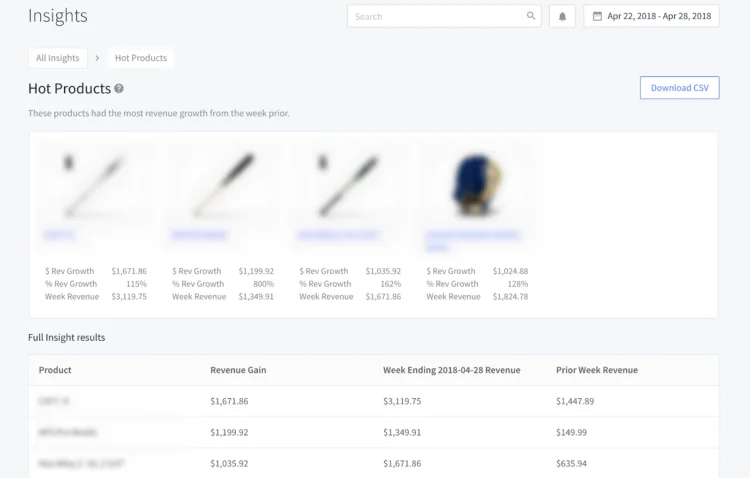
Determining the shortest routes: Amazon uses big data to help in their expedited shipping process. They find a vendor closest to the buyer to reduce shipping cost.
Multi-Warehouse Orchestration
For determining the shortest routes and using multi-warehouse capabilities, most brands use an ERP like Brightpearl or their preferred vendor.
These ERPs serve as the a single source of truth, connecting orders back in to the system and routing shipping information appropriately.
In order for this top work, API call limits and speed are incredibly important –– as is your system integrator.
SILK Software helped Flip Flop Shops setup a multi-warehouse, in-store pick up model for the international brand.
When an order is placed on FlipFlopShops.com, it is automatically routed to the appropriate manufacturer via BigCommerce’s integration with Hublogix, so the end customer has a seamless buying experience.
Customers can also locate the nearest FFS store location to them, and if they are to place an order, the system will automatically calculate the nearest store based on shipping zip code and credit that franchise a percentage of the sale.
Recorded business outcomes:
Sales growth across all franchises, both on and offline.
A single site and source of truth for all online sales
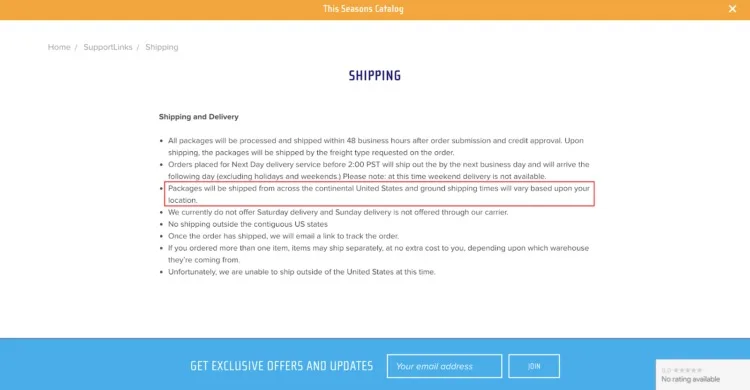
Executive Summary
Ecommerce big data is a very helpful tool for the competitive ecommerce business world.
In order to make it work, though, you need:
The permission of your user to collect the data (as required by GDPR).
Smart data programs that offer value to your customer.
To keep the data small, and function within your area of expertise. Not all data points matter.
For brands using SaaS platforms like BigCommerce, you already have access to useful tools allowing you to make sense of your customer data as well as collected on-site data for A/B testing and UX experiments.
Now, the key is for you to operate within your circle of competence in order to avoid the pitfalls of big data and use it as a tool to power business growth, setting yourself apart from other businesses.
As only less than 0.5% of available data is being used to power business growth, set yourself apart from other businesses by using online shopping big data.

Maddy Osman is a writer for BigCommerce specializing in search engine optimized content and deep dive articles that help readers and companies achieve their goals. You can learn more about her process at The-Blogsmith and follow her on Twitter: : @MaddyOsman